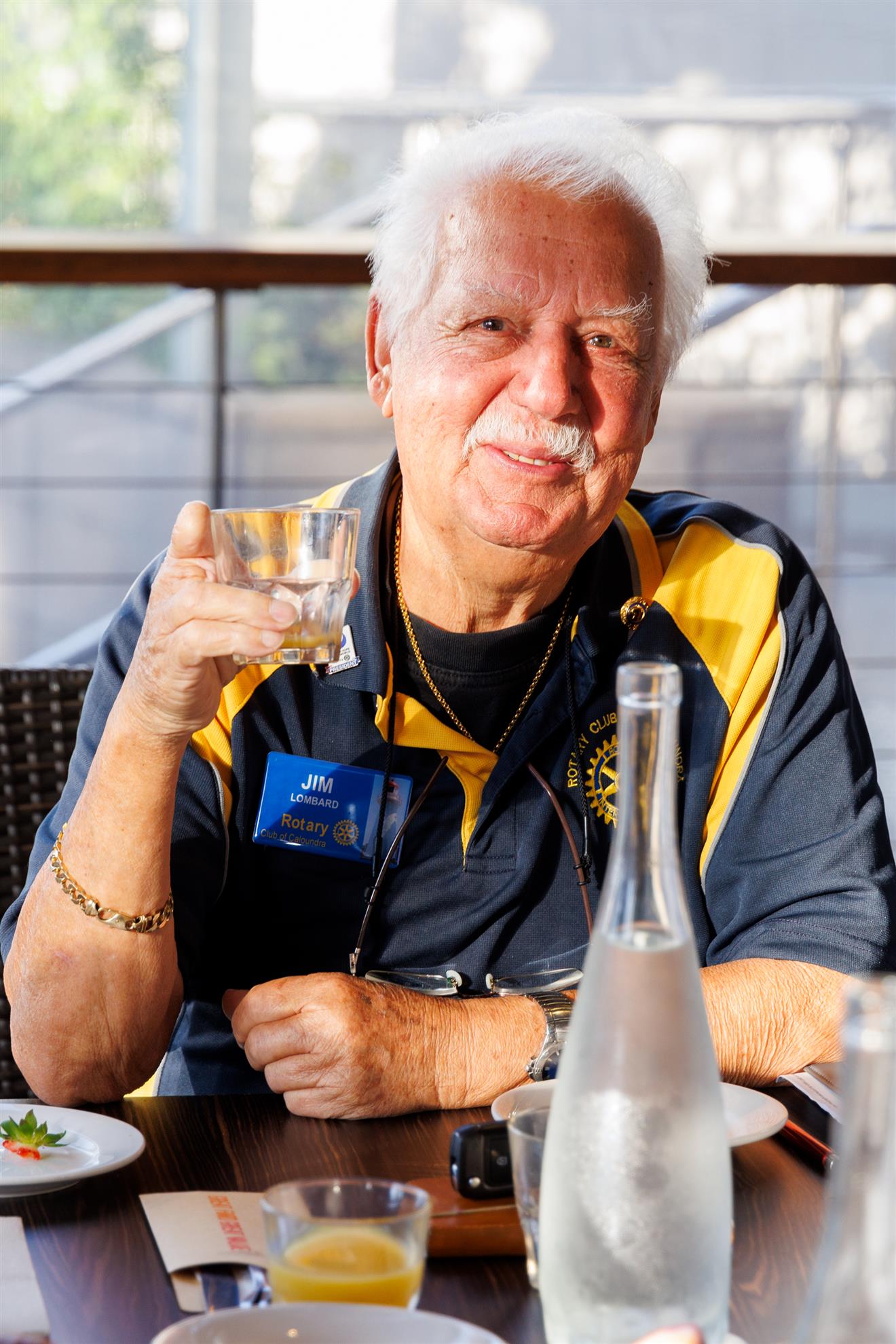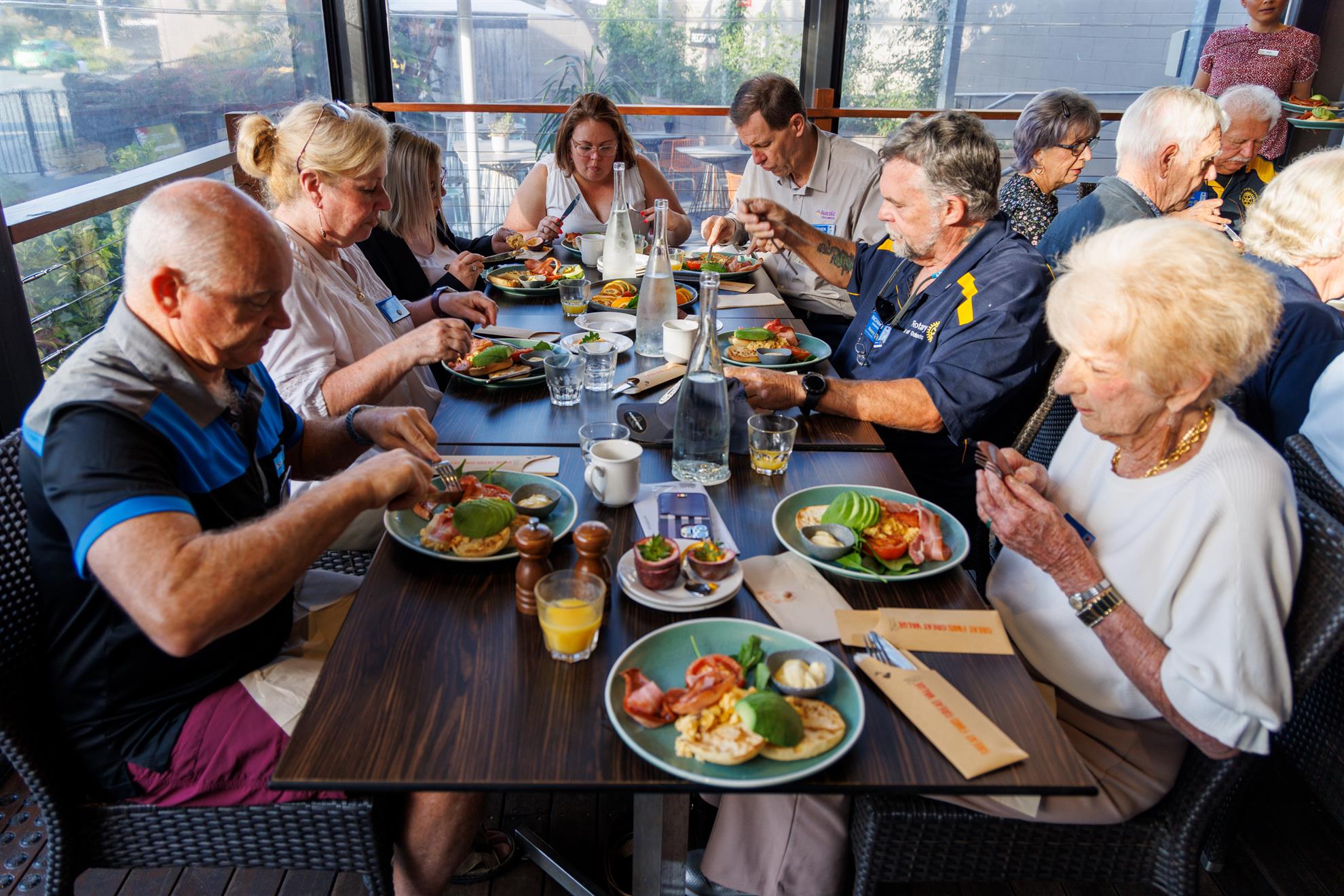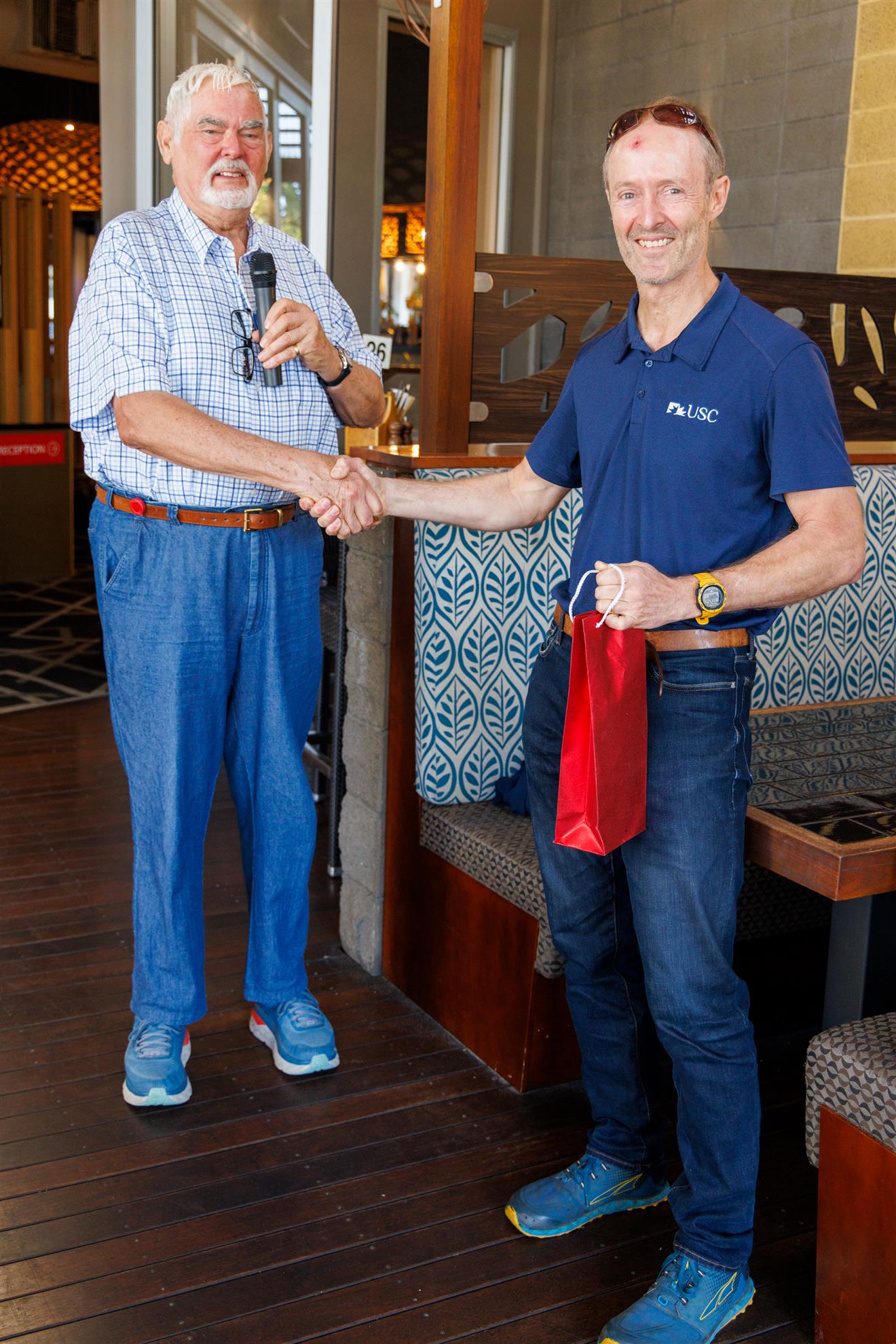

Chair Chris welcomed visitors Adrian, Sally, Kendal, Sam, Georgia, and Richard’s guest Patrick
Darryl proposed the International Toast to the Rotary Club of Fiji
Thanks for the photos Dave

President Jim welcome the guests
- Special thanks to Deborah for organising the event.
- Survived smoke from the recent fires
- And acknowledge our distinguished guest speaker Adrian

We dived into the breakfast at the Golden Beach Tavern
Judy introduced Adrian.
Dr Adrian McCallum currently serves as Head of Engineering at University of the Sunshine Coast and manages courses in soil mechanics, geotechnical engineering and weather and climate. He is fortunate to have led a life of adventure and exploration around the globe and is an expert in remote area science & engineering.
He holds a PhD from the Scott Polar Research Institute, University of Cambridge and additional degrees in oceanography, meteorology and civil engineering. In 2002 he was awarded the Australian Centenary Medal for his stewardship of the 2001 Australian Army Centenary Everest Expedition and he is a Menzies Scholar and previous Director of the Menzies Foundation; a non-profit, non- political organisation created to promote excellence in health research, scholarship and postgraduate study by Australians.
During twenty years’ service across the Australian Defence Forces he served in numerous diverse roles such as helicopter navigator, meteorologist and civil engineer and he has led or participated in adventurous scientific expeditions around the globe. These investigations have taken him to many far-flung locations including Svalbard, Greenland, across the Arctic and Antarctica, and to the Himalaya and the ice caps of Patagonia. He orchestrated Sir Ranulph Fiennes' ground-breaking 2013 winter Transantarctic expedition, he owns a company specialising in remote area science and engineering and he regularly consults to the Australian Antarctic Division and other international agencies on polar infrastructural and operational matters
He holds a PhD from the Scott Polar Research Institute, University of Cambridge and additional degrees in oceanography, meteorology and civil engineering. In 2002 he was awarded the Australian Centenary Medal for his stewardship of the 2001 Australian Army Centenary Everest Expedition and he is a Menzies Scholar and previous Director of the Menzies Foundation; a non-profit, non- political organisation created to promote excellence in health research, scholarship and postgraduate study by Australians.
During twenty years’ service across the Australian Defence Forces he served in numerous diverse roles such as helicopter navigator, meteorologist and civil engineer and he has led or participated in adventurous scientific expeditions around the globe. These investigations have taken him to many far-flung locations including Svalbard, Greenland, across the Arctic and Antarctica, and to the Himalaya and the ice caps of Patagonia. He orchestrated Sir Ranulph Fiennes' ground-breaking 2013 winter Transantarctic expedition, he owns a company specialising in remote area science and engineering and he regularly consults to the Australian Antarctic Division and other international agencies on polar infrastructural and operational matters
Adrian noted that his talk was prepared for school children from Immanuel Lutheran College, but he did promise to keep it more simple to suit the current audience
Why/how
“white limbo“
1984 – first Australian to summit Everest.
Military Academy.
Pilot/air force.
Polar explorer.
Worked with Sir Ranulph Fiennes “the world's greatest living explorer”
Macquarie Island
“white limbo“
1984 – first Australian to summit Everest.
Military Academy.
Pilot/air force.
Polar explorer.
Worked with Sir Ranulph Fiennes “the world's greatest living explorer”
Macquarie Island
2001 Everest - three were killed in an avalanche, including an eight year old girl.
That is why he became an engineer – to understand the dynamics of snow and ice
His army experience was invaluable.
Runways on glacial ice - example where engineering issues had to be understood.
UK – study more snow and ice.
Greenland – ice.
Then Svalbard – Norway and polar bears.
Then Antarctica.
Snow testing up 26. MPa – concrete is 20 MaP
Sea ice is up to 40 MPa

Slides of the British “Hally“ based on skis - camps 1,2,3,4 and 5 are in the ocean - camp six is on skis so they can move it.
Ice thickness - ground penetrating radar looking for a crevices.
Video 2011 - North Pole – “Living on thin ice”
2010 scientist scientist for Arctic expedition
North to Greenland.
Arctic drives Atlantic
Ice thickness - ground penetrating radar looking for a crevices.
Video 2011 - North Pole – “Living on thin ice”
2010 scientist scientist for Arctic expedition
North to Greenland.
Arctic drives Atlantic
Arctic – moving ice, and living on butter, nuts and chocolate.

To North Pole by DC3
Flat ice equals new ice, so it is “thin“
Six weeks… Plane didn’t land
67mm is minimum thickness to land on ice
Then to the University of the Sunshine Coast where he’s been for 10 years
Greenland PhD thesis – working with Sir Ranulph Fiennes
Next trip??
Flat ice equals new ice, so it is “thin“
Six weeks… Plane didn’t land
67mm is minimum thickness to land on ice
Then to the University of the Sunshine Coast where he’s been for 10 years
Greenland PhD thesis – working with Sir Ranulph Fiennes
Next trip??
Inspire next generation
“USC Explore“
Questions
Chris asked about his thoughts on the planet warming.
Yes, it is warming, but Adrian cannot put his finger on the reason.
Pelican waters and the new opening.
Richards mooring now has more bare sand, and at other times water up to 400 mm higher than before
A - different dynamics in the Passage.
Sally does being thin make it harder in the cold?
Pressure under the ice from Richard
Dave had a question about about the need to keep batteries warm.
Richards mooring now has more bare sand, and at other times water up to 400 mm higher than before
A - different dynamics in the Passage.
Sally does being thin make it harder in the cold?
Pressure under the ice from Richard
Dave had a question about about the need to keep batteries warm.

Chris thanked, Adrian.
Darryl – next week at Gateway Care
An actual sign at a golf club in Scotland
1. BACK STRAIGHT, KNEES BENT, FEET A SHOULDER WIDTH APART.
2. FORM A LOOSE GRIP.
3. KEEP YOUR HEAD DOWN!
4. AVOID A QUICK BACK SWING.
5. STAY OUT OF THE WATER.
6. TRY NOT TO HIT ANYONE.
7. IF YOU ARE TAKING TOO LONG, LET OTHERS GO AHEAD OF YOU.
8. DON'T STAND DIRECTLY IN FRONT OF OTHERS.
9. QUIET PLEASE...WHILE OTHERS ARE PREPARING.
10. DON'T TAKE EXTRA STROKES.
WELL DONE...
NOW, FLUSH THE URINAL, WASH YOUR HANDS, GO OUTSIDE, AND TEE OFF.